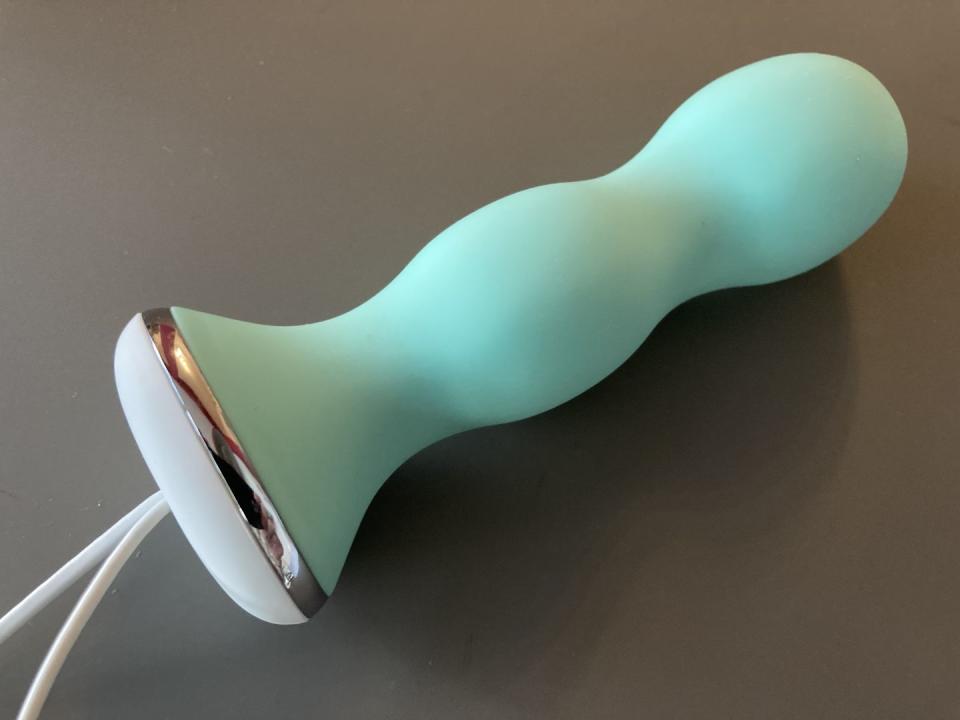Asking for a Friend: What Even Is Pelvic Floor Therapy?

The powers of Google likely led you here because it's 2 a.m. and everyone in the group chat—aka the sacred space for you and your girls' most personal and dire questions—is already asleep. Sigh. Maybe you're suddenly having pain with sex and wanna know WTF is going on down there. Or maybe you're pregnant for the first time (yay!) and your docs (and mom) keep saying something about doing your kegels. Or maybe you're recently postpartum and after giving birth, people have been telling you not to ignore any potential issues down there. Don't sweat, this all just has to do with your pelvic floor health.
I know, the phrase "pelvic floor" is kinda mysterious. To understand it, you first gotta know about your pelvis, the part of your body between your abs and legs that is the house for your hips, butt, bladder, intestines and all your reproductive organs. The pelvic floor is a group of muscles that keeps all those essentials tucked up inside you. It helps you sit down, do squats, go to the bathroom easily, have sex—ya know, the necessities. If something with your pelvic floor is outta whack, you probably have pain doing some of these basic things and it's worth getting checked out.
Enter: pelvic floor therapy. But if you're like me, that term just sounds like the name of a bad '80s band your dad was obsessed with and still rants about. So, I tapped a bunch of medical experts to dish on everything you need to know about the treatment. From what pelvic floor therapy actually is to what it fixes to what you should expect from a therapy session (hint: it involves wearing comfy clothes, so you’re probably halfway there if you’re sitting on your bed scrolling through this), they get into it all.
Okay, wait. What exactly is pelvic floor therapy?
It's just like any other physical therapy, except it treats the muscles around your pelvis so that they work the way they're supposed to. Sometimes those muscles can be tight or stiff, so the service helps loosen them up. Or, if they're super weak, it works to make the pelvic floor stronger. For example, when you poop, your rectum muscles are supposed to naturally relax to help you get all the shit out. But when there's some kind of dysfunction in the mix, you can feel constantly constipated or even be a little leaky (and no one wants either of those). Pelvic floor therapy helps get all that back in proper working order.
Gotcha. So what all happens during a pelvic floor therapy exam?
First, there's a health history evaluation with a load of nosiness. "Expect personal questions and conversations that you typically would not have with your friends," says Maya Lespinasse, PT, DPT, a pelvic health, postpartum, and orthopedic physical therapy specialist in Mansfield, Massachusetts. If trauma is part of your history, share that with your physical therapist (PT) only if you're comfortable—you are literally not required to and shouldn't if you don't want. After, be ready to share at length about your symptoms.
Then comes the physical part of the evaluation. For the external exam, the PT will check your posture, and the mobility of your hips, spine, and other pelvis-adjacent areas. An internal pelvic exam is ALWAYS optional. If you ever feel forced to do one, run up out of that office. Quickly. If you do decide to get the internal exam though, prepare for something similar to your annual gyno appointment, minus the stirrups, metal instruments, and speculum, says Dr. Lespinasse.
Here's how it goes down: You get undressed while the PT is out of the room, lay down on an exam table and then cover yourself with a sheet. When the PT comes back in, they'll gently push one or two gloved and lubed fingers into your vagina (or butthole, if that's where your problems are) to check for strength or tension of your pelvic floor muscles and to make sure you have the sensation to feel everything.
Noted. So after the exams, what goes on in pelvic floor physical therapy?
After the PT determines your unique problem, they'll give you specific exercises to do, kinda like if you had a sports injury to rehab. This can include stretches, breathing, or mindfulness practices that help you learn to relax and contract your pelvic floor muscles at the right time, explains Ashley Rawlins, PT, DPT, a physical therapist and clinical learning and development lead at Origin.
There are also devices to help stimulate and strengthen your pelvic floor that may be used in a therapy session, like the pic below. Just be sure your doc fully explains to you the purpose of the tool and why it's being used in your treatment plan.

Keep in mind your session and homework exercises won't look like the next person's. It's all based on what concerns you have and what's keeping your body from working it's best.
Makes sense. But how do I know if I need pelvic floor therapy?
Great question. There's a bunch of reasons why the treatment may be good for you, which Dr. Rawlins and other physicians line out below. Let your OB-GYN know about these first, though. Depending on their assessment, they may or may not give you a referral for pelvic floor physical therapy.
Sex is painful for you.
Your muscles clamping with penetration can be caused by a lot of factors, including anxiety or past sexual trauma, but pelvic floor therapy can be helpful with most of them, explains Lyndsey Harper, MD, an OB-GYN and founder of the sexual wellness platform Rosy. If you have regular spasms that hurt, this therapy works to treat that too, said Dr. Harper.
You have endometriosis.
Pelvic floor therapy can help you deal with some of the condition's majorly uncomfortable (and flat out excruciating) symptoms, like the severe pain that happens with periods, the digestive issues, and pain with penetration, says Oluwayeni Abraham, PT, DPT, founder of Triggered Physical Therapy in Arlington, Texas.
Your bathroom habits have changed.
Remember that example about poop? It goes for peeing too. If your peeing patterns are suddenly super wonky—like, consistently having to pee a lot more, or never feeling like you're fully done, or having some leakage here and there—it may be time to look into pelvic floor therapy.
You're trying to get pregnant.
Sometimes people have trouble getting or staying pregnant because they have a lot of scar tissue from endometriosis, inflammation, or procedures (like, removing uterine fibroids), explains Dr. Abraham. Your pelvic floor PT can help decrease some of that scar tissue by using an external manipulation technique (like, a fancy medical massage) around the abdomen.
You just had a baby.
Having an entire human come from your body can do a number on it—from scarring, to difficulty healing from a tear or C-section, to having severe changes in your ab muscles. Going to pelvic floor therapy at least once during postpartum could do wonders for those, advises Dr. Lespinasse.
You've experienced trauma.
This could mean sexual violence, a traumatic birth, or a pregnancy loss. Your pelvic floor therapist will create a safe environment to work toward healing the injury or pain associated with that trauma at a pace you're comfortable with—which is the most important.
How should I prepare for pelvic floor therapy?
Check your insurance.
Medical and doctor stuff can be expensive, especially if you have to pay outta pocket. Hit up your insurance carrier to see if they offer physical therapy benefits—that way you might only have a small copay for each session. Smaller, boutique clinics might be out-of-network, but ask what they offer if that's the case.
Act like you're going to the gym.
Wear comfy clothes so you can move easily. And prep your muscles for a workout, because they're about to have one. "I always encourage being incredibly hydrated and having a protein-dense meal [before] to help with pain receptors," Dr. Abraham suggests.
Do your research.
Especially if you've never had pelvic floor physical therapy before. Read about your symptoms and what's going on with your body, says Dr. Rawlins. "Learning about what could be causing your symptoms and pelvic floor dysfunction ... can really help to make you feel confident when taking steps towards better pelvic health," she says.
Jot down your thoughts.
Your pelvic floor PT is about to be all up in your business—past and present. If this kinda stuff flusters you on the spot, punch a few must-tells in your Notes app before your appointment. Plan for questions like: What problem(s) are you experiencing? When did they start? How have they changed over time? What are your goals for treatment? Is there any other context that would be helpful to know for your treatment? If you want to discuss any kind of trauma, have a script ready to hopefully make reliving that moment less painful emotionally.
Remember you're in control.
You have agency over your body, Dr. Abraham stresses, so refuse any kind of internal or external exam that doesn't sit right with you. This goes for questions too. Pelvic floor therapy is supposed to be a safe space for healing, so when you're comfortable, put it all on the table.
You Might Also Like

